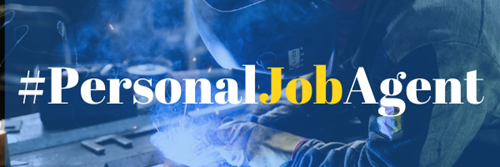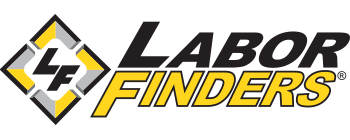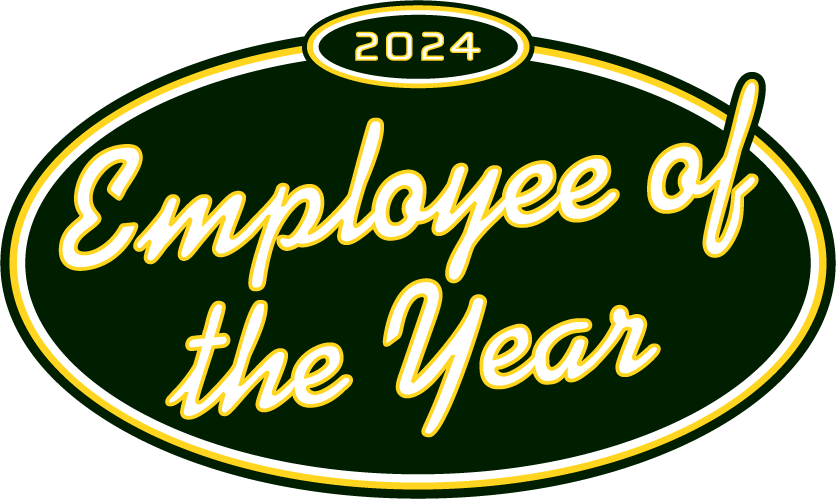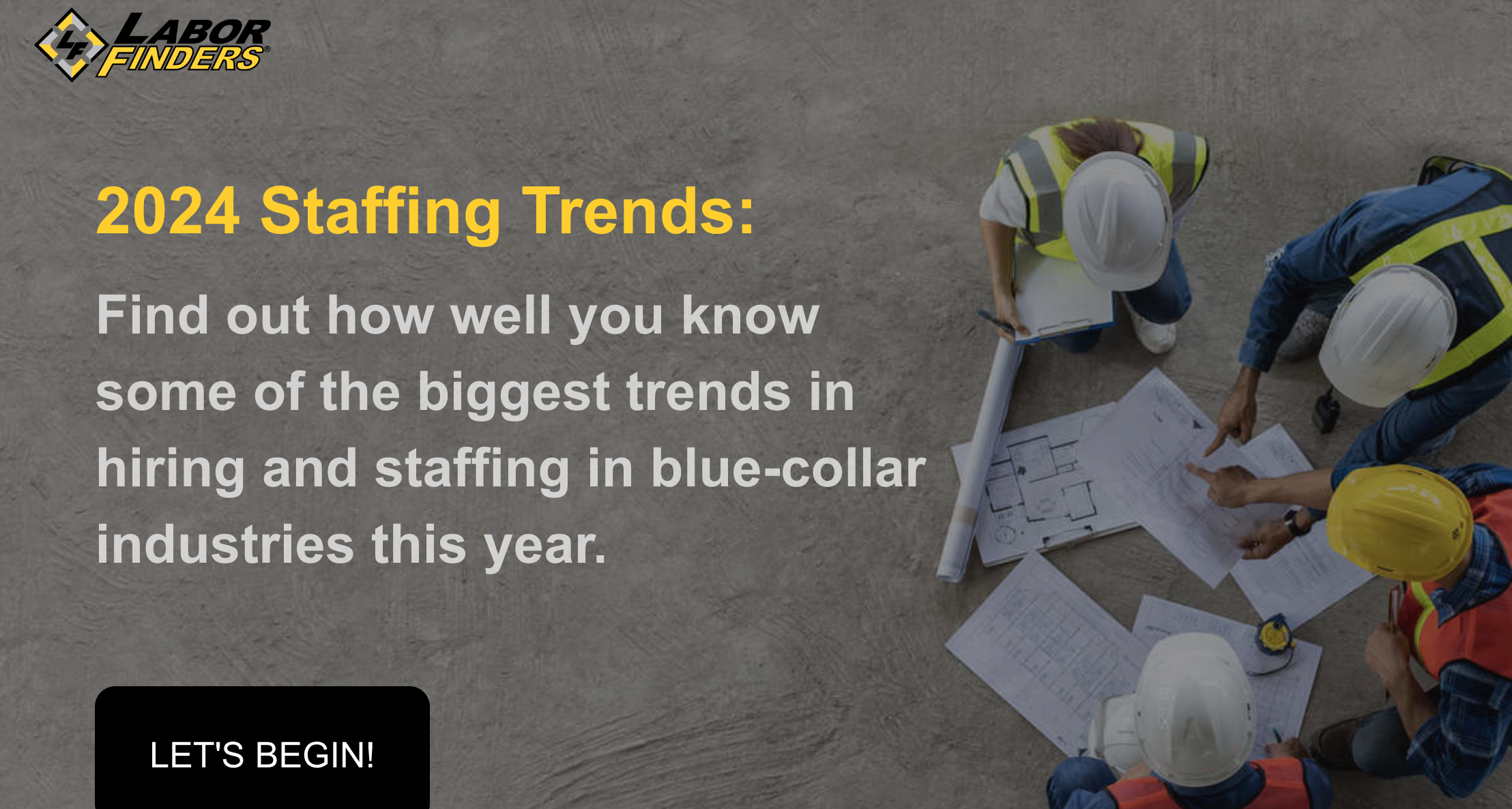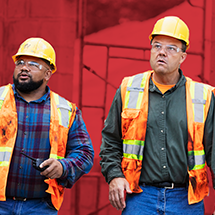-
Job Seekers
X
Job Seekers
Whether you're looking for a temp job or a permanent career, Labor Finders has you covered!
-
Explore
- How it works
- Industries
- Blog
- Locations
- Job Search
You May Also Be Interested In

2024 Employee of the Year
Learn more about our amazing Employee of the Year
-
-
Employers
X
Employers
Let us help you find the workers you need, when you need them.
You May Also Be Interested In

2024 Staffing Trends Quiz
Construction Staffing Trends Quiz
-
Industries
X
Employer Industries
Ready to staff your next project? Our staffing experts has the knowledge and the workers to cater to your unique staffing needs.
In this Section:
Job Seeker Industries
From construction to waste management, we have job openings in whatever industry you’re interested in.
In this Section:
-
About
X
About You
Getting matched to the right job, gaining the flexibility you want, making an impact in your community - at Labor Finders, it’s all about you!
-
You may also be interested in
- About Us
- Job Search Results
- Find an Office
- How it works
- Blog
About Us
With almost 200 offices nationwide, we’ve been putting people back to work for over 40 years. See why we’re a leader in the blue-collar staffing industry.
-
You may also be interested in
- About Us
- Media Center
- Video Library
- Leadership Team
- Careers
- In The Community
- History
-
- Location
Employment Readiness
The Ultimate Guide to Welding, Part 1: What Welders Do
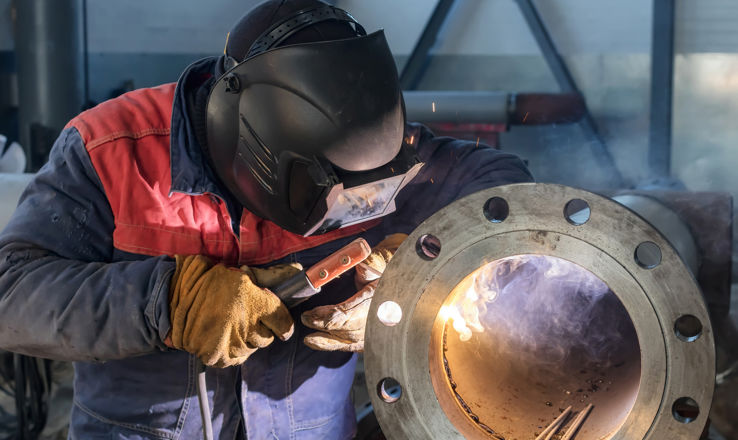
Welding is a highly versatile and important process used in NASCAR racetracks, the oil fields of Texas, and airports across the world. There are hundreds of welding jobs available. The key to success, however, is selecting the right job for you. In order to find a welding job that best fits your skillset, it is important to have a complete overview of welding.
What is Welding?
Welding is the process of joining together metals through heat and/or pressure to create a strong bond. It is widely used because of its efficiency, strength and versatility. The technique used is based on many factors, including the type of metal being welded and the size of the welding job. The four most common welding techniques are:
Stick Welding / Shielded Metal Arc Welding (SMAW): Stick welding is the most common, inexpensive type of welding process used, and it is used mostly in the construction industry on steel structures.
TIG Welding / Gas Tungsten Arc Welding (GTAW): TIG welding is the most difficult yet versatile type of welding process to learn, and it is used mostly for critical weld joints and for small precision welding because it produces a high-quality weld.
Metal Insert Gas (MIG) Welding / Gas Metal Arc Welding (GMAW): MIG welding requires a welding gun that feeds the weld metal and distributes a shield gas to protect the welder from toxic elements. It is commonly used in high-production indoor manufacturing and automobile repair industry shops and factories.
Flux Cored Arc Welding (FCAW): FCAW is the fastest type of welding process because it requires a hollow tube wire that has a flux inside of it that provides shielding from the air, which helps MIG welders working in windy conditions by increasing how much weld can be produced per hour.
What Do Welders Do?
Now that you know what welding is, let’s talk about what a welder does specifically. A welder’s job is to join metals together to create a strong bond by using hand-held or remotely controlled equipment that applies heat and/or pressure. A welder’s basic responsibilities include reading blueprints, sketches and specifications, calculating the dimensions of welding projects, inspecting materials and structures to be welded, igniting torches and starting power supplies. The welder must also monitor their work to prevent overheating as well as maintain machinery and equipment.
Unskilled welders, who have little to no knowledge about metal properties, gas types, wires and settings, might work on assembly lines, performing repetitive welding tasks. Skilled welders, who have significant knowledge, certification or experience, are hired to complete advanced techniques to weld metal components.
How Welders Stay Safe on the Job
Even the most inexperienced welder knows that safety is a critical component of any welding job. Some of the most common threats to welders in the workplace are burns and dangerous fumes. Toxic gas in the atmosphere is a hazard that must be carefully monitored when welding in confined spaces.
To help keep welders safe, there are safety guidelines from the United States Department of Labor that help control, minimize or avoid welding hazards. For example, personal protective equipment (PPE) is worn by welders to minimize exposure to hazards and shield from injuries, such as burns and exposure to arc rays. PPE can include gloves, glasses, shoes, hard hats, respirators, vests and even full body suits.
Read more about how to become a certified welder in The Ultimate Guide to Welding, Part 2: How to Become a Certified Welder.
Considering a career in welding? Click here to connect with a Personal Job Agent in your area that can help you get started.
